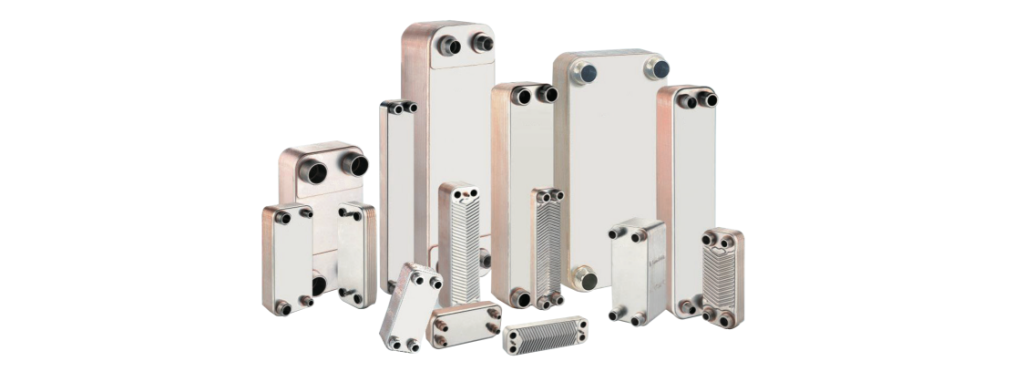
Exploring the Purpose of a Brazed Plate Heat Exchanger: Simplifying Heat Transfer
2023-08-14 | Heat Exchanger
Have you ever wondered how industries efficiently transfer heat from one fluid to another? In this blog post, we'll unravel the functionality of a brazed plate heat exchanger, shedding light on its role in simplifying heat transfer processes. Let's dive into the world of heat exchange with ease!
Understanding Brazed Plate Heat Exchangers:
A brazed plate heat exchanger (BPHE) is a compact and efficient device designed to facilitate the transfer of heat between two fluids. It consists of a series of corrugated metal plates stacked together and brazed using a special technique. This design maximizes the surface area available for heat exchange within a small footprint.

How Brazed Plate Heat Exchangers Work:
1. Fluid Channels:
The two fluids, usually with different temperatures, flow through alternate channels formed by the corrugated plates. The proximity of the fluids allows heat transfer to occur.
2. Heat Transfer:
As the fluids pass through their respective channels, heat is transferred from the hotter fluid to the cooler one. This process occurs due to the close contact between the fluids and the large surface area provided by the corrugated plates.
3. Efficiency:
The compact design and enhanced surface area of the brazed plate heat exchanger result in efficient heat transfer with minimal energy loss.
Advantages of Brazed Plate Heat Exchangers:
1. High Thermal Efficiency:
The design allows for efficient heat transfer, enabling industries to achieve desired temperature changes swiftly.
2. Compact Size:
BPHEs are much smaller than traditional shell-and-tube heat exchangers, making them suitable for applications with limited space.
3. Cost-Effective:
Their compactness and high efficiency translate to lower operational costs and reduced energy consumption.
4. Durability:
The brazing process creates a strong bond between plates, enhancing the heat exchanger's durability and resistance to pressure and temperature fluctuations.
5. Ease of Maintenance:
Cleaning and maintenance are simplified due to the detachable plate design, which allows easy access to channels.
Applications of Brazed Plate Heat Exchangers:
Brazed plate heat exchangers find their utility across various industries:
1. Heating and Cooling Systems:
They are used in residential and commercial heating, ventilation, and air conditioning systems.
2. Industrial Processes:
BPHEs efficiently manage temperature in chemical, pharmaceutical, and manufacturing processes.
3. Refrigeration:
They play a crucial role in refrigeration cycles by transferring heat between refrigerants and cooling fluids.
4. Renewable Energy:
In solar thermal systems, they aid in transferring heat from solar collectors to water or other heat storage mediums.
In Conclusion:
Brazed plate heat exchangers play a vital role in simplifying heat transfer processes across industries. Their compact design, high efficiency, and versatile applications make them indispensable tools for managing temperature and optimizing energy use. Whether in heating systems or industrial processes, the brazed plate heat exchanger contributes to efficient, eco-friendly, and cost-effective heat exchange solutions.